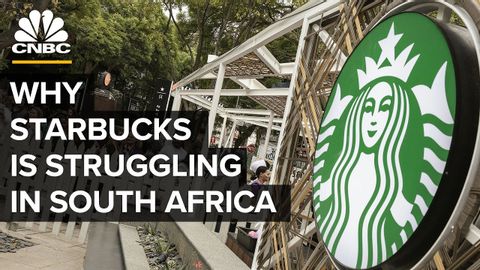星巴克為何在南非舉步維艱? (Why Starbucks Is Struggling In South Africa??)
 沒有此條件下的單字
沒有此條件下的單字US /ˌɑpɚˈtunɪti, -ˈtju-/
・
UK /ˌɒpə'tju:nətɪ/
- n. (c./u.)機會;時機;良機;工作機會;商機
US /ˈpɪriəd/
・
UK /ˈpɪəriəd/
- n. (c./u.)時期;(用於句末;表示斷定的口氣)就這樣;句號;月經;期間
US /ˈrevənju/
・
UK /'revənju:/
- n. (c./u.)收益;稅收;收入;稅務局;營業收入
US /kənˈsɪdər /
・
UK /kən'sɪdə(r)/

